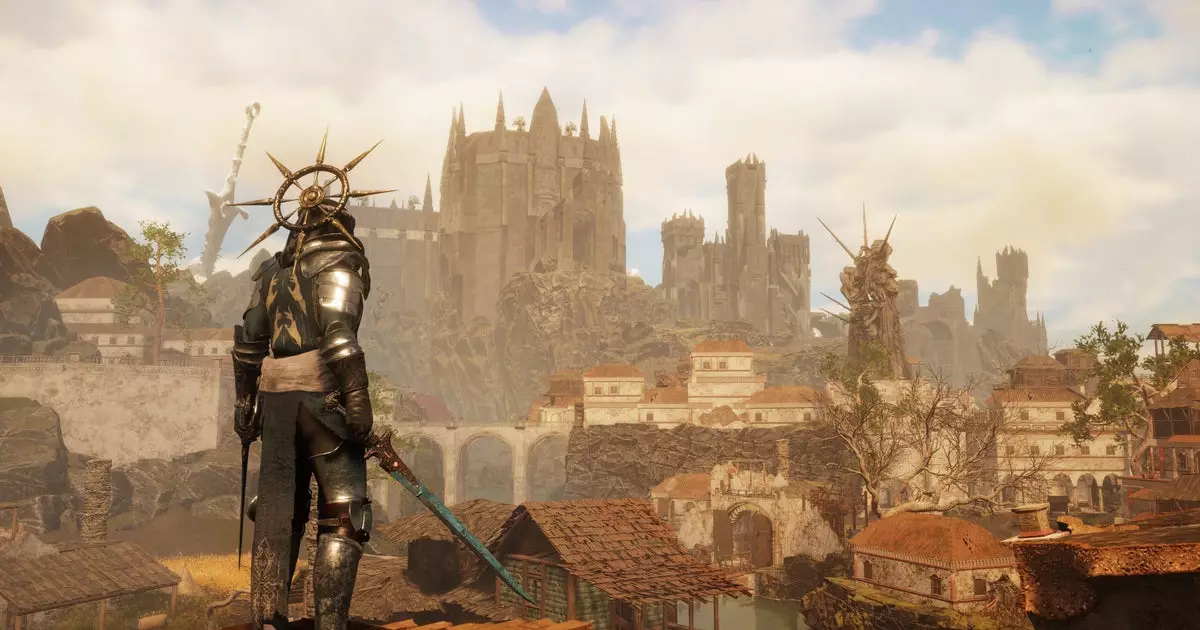As the gaming community continues to navigate away from mainstream titans like Skyrim and the recent Oblivion remaster, many players seek alternatives that provide rich lore and immersive gameplay. In this landscape of indie titles, “Tainted Grail: The Fall of Avalon” has emerged as a beacon of intrigue, captivating audiences with its fresh take on Arthurian mythology and game mechanics alike. With an overwhelmingly positive reaction on Steam as it transitions out of early access, the game promises a unique experience laced with darkness and complexity.
Set approximately 600 years after the legendary King Arthur’s demise, “The Fall of Avalon” unravels in a universe engulfed by relentless conflict, disease, and dread. The land itself is divided into three distinct zones, each steeped in its own rich lore and unique challenges. Players can anticipate anywhere from 50 to 70 hours of extensive gameplay, filled with over 200 side quests and engaging activities that go beyond traditional RPG elements, including home decoration and farming. The introduction of these mechanics hints at a deeper simulation than in many modern RPGs, adding layers of depth to an already rich narrative.
A Spooky Yet Familiar Environment
The game’s aesthetics fall under the banner of “everlasting autumn,” an artistic choice that perfectly encapsulates the ambiance of decay and desolation invading the world of Avalon. With a visual approach reminiscent of FromSoftware’s gothic landscapes, the game’s environment teeters on the brink of beauty and ruin. Players glimpse shattered cosmic castles amidst their quest, evoking a sense of wonder even in the depths of despair.
Yet, while the visuals are striking, what truly sets “The Fall of Avalon” apart is its atmospheric tension. The Wyrdness, a chaotic and primordial force, acts as a gameplay mechanic that escalates the stakes. As night falls, so does an increase in difficulty; enemies become tougher, forcing players to adapt and strategize. This cycle not only keeps the player on their toes but taps into a quintessential fear—the dark unknown lurking around the corner.
Flexibility in Play Style
One of the game’s biggest selling points lies in its promise of limitless playstyles. It boldly claims that players can craft their own narratives through various build combinations, whether it be a berserker-alchemist or a stealthy archer. This flexibility presents the opportunity for immersive role-playing that many gamers crave, allowing them to make choices reflective of their unique styles. However, such lofty promises raise an important question about execution. The industry has often been rife with similar claims that result in vague gameplay elements lacking depth.
Despite skepticism surrounding the oft-used buzzwords like “morally grey story” and “meaningful choices,” the game’s mechanics suggest real freedom to approach challenges in varied ways. If this turns out to be true, players will likely find themselves enraptured by their own narratives, potentially leading to unforgettable emotional connections to the game’s world.
The Dark Narrative Draws Us In
At the heart of “Tainted Grail: The Fall of Avalon” lies an intriguing narrative filled with darkness and complexity. A plague called the Red Death exacerbates the already dire conditions of the realm, as priests conduct horrific experiments in a frantic search for a cure. This macabre theme invites players to explore the moral ambiguities of desperation. While some may find this grim material distressing, it’s precisely this sort of narrative depth that can elevate a game from ordinary to extraordinary.
Moreover, this exploration of morality seems to reach far beyond the surface. It presents a canvas for players to question their choices and motivations, imbuing an otherwise fantastical landscape with a relatable struggle against human flaws—fear, desperation, and a quest for power.
While the game is not without its concerns—especially regarding the potential for overused tropes—it’s uniquely poised to invigorate a genre often dominated by cliché narratives. “The Fall of Avalon” beckons players to explore their creations with a sense of curiosity, pushing the envelope of what a traditional RPG can offer. As players embark on this dark journey, they may find not only an entertaining escape but a compelling exploration of the human condition wrapped within the whimsical fabric of fantasy.
In the overarching conversation of what makes a game exceptional, “Tainted Grail: The Fall of Avalon” stands at the precipice of offering a rich tapestry woven from darkness, questioning, and immersion. For those longing to step away from the familiar and delve into a realm where the shadows hold secrets, this title shines with promising potential.

